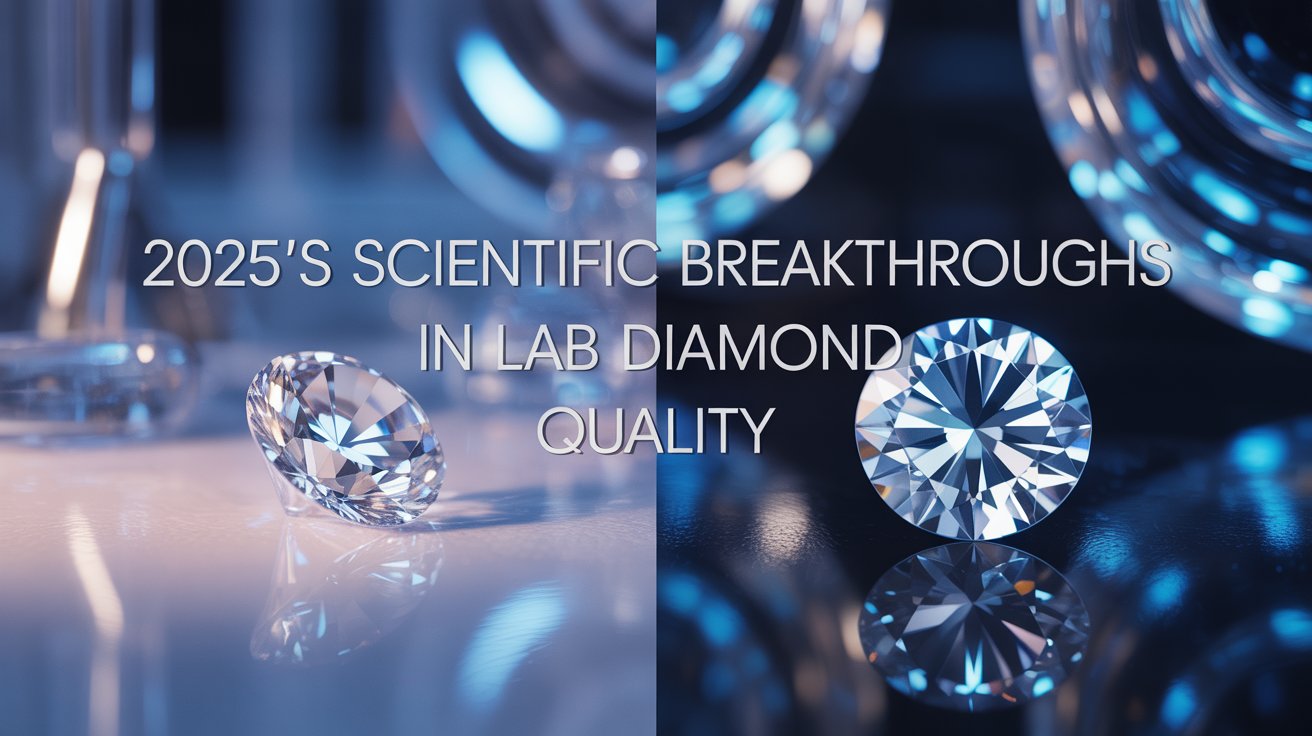For those with a passion for science and a fascination with materials, lab-grown diamonds aren't just sparkling gemstones; they are a testament to human ingenuity and a triumph of controlled scientific processes. Forget mining expeditions—we're talking about diamond alchemy—transforming simple gases into dazzling crystals in a laboratory. Intrigued? Let's delve into the science behind CVD (Chemical Vapor Deposition), the leading technology that's making lab-grown diamonds a modern marvel.
The Challenge: Nature's Extreme Diamond Recipe—Replicated in the Lab
Nature creates diamonds under incredibly extreme conditions—immense pressure and heat, deep within the Earth’s mantle, over billions of years. To replicate this in a lab is no small feat. Scientists needed to reverse engineer nature’s diamond-making process, but at an accelerated pace and in a controlled environment. This is where CVD technology shines.

CVD: Chemical Vapor Deposition—Step-by-Step Scientific Breakdown
The Chemical Vapor Deposition (CVD) method is a sophisticated process that leverages fundamental principles of chemistry and physics to grow diamonds, atom by atom. Here's a simplified, scientifically grounded breakdown
· Step 1: The Diamond Seed – The Foundation of Growth: The process begins with a tiny, meticulously selected diamond “seed” crystal. This seed acts as the foundation upon which the lab-grown diamond will crystallize. The quality and orientation of this seed are critical for the final diamond’s structure.
· Step 2: The Vacuum Chamber – Creating a Pristine Environment: These diamond seeds are placed inside a vacuum chamber. Creating a vacuum is essential to remove any unwanted gases and contaminants, ensuring a pure and controlled environment for diamond growth. This precise atmospheric control is a hallmark of CVD.
· Step 3: Introduction of Carbon-Rich Gases – The Building Blocks: Next, a carefully balanced mixture of carbon-rich gases, typically methane (CH₄), along with other gases like hydrogen, is introduced into the chamber. Methane serves as the primary carbon source, the fundamental element of diamond.
· Step 4: Energy Activation – Creating Plasma (Microwave or Hot Filament CVD): This is where the “magic” happens. Energy is introduced into the chamber to activate the gases and initiate the diamond-growing process. Two common CVD methods employ different energy sources:
o Microwave Plasma CVD (MPCVD): Microwave energy is used to create a plasma – an ionized gas – from the gas mixture. This plasma provides the energy to break down the methane molecules.
o Hot Filament CVD (HFCVD): Heated filaments are used to thermally decompose the gases.
In both methods, the energy input is crucial for breaking down the stable methane molecules and freeing carbon atoms.
· Step 5: Carbon Deposition – Layer-by-Layer Crystal Growth: Within the chamber, the energy source (plasma or hot filaments) causes the methane gas to break down. This releases carbon atoms, along with hydrogen and other elements. Crucially, in the carefully controlled environment, these freed carbon atoms, under specific temperature and pressure conditions within the chamber (though significantly lower pressure than natural diamond formation), begin to deposit, layer by layer, onto the diamond seed crystal.
· Step 6: Precise Control – Engineering Crystal Structure: The beauty of CVD lies in its precision. Scientists meticulously control factors like gas flow rates, temperature, pressure, and energy input within the chamber. This level of control allows them to influence the growth rate, crystal structure, and ultimately, the quality and characteristics of the resulting lab-grown diamond. By manipulating these parameters, they can minimize defects and optimize for desired diamond properties.
· Step 7: Post-Growth Processing – Refinement and Brilliance: After weeks (or 7-8 days longer, depending on the desired size), the diamond seed has grown into a larger diamond crystal. This rough lab-grown diamond then undergoes cutting and polishing – just like a mined diamond – to reveal its inherent brilliance and fire.
The Scientific Appeal: From Atomic Level Control to Material Mastery
For scientists and engineers, the CVD process is captivating for several reasons:
- Fundamental Science in Action: CVD brilliantly showcases principles from multiple scientific disciplines – plasma physics, thermodynamics, materials science, and crystal growth. It's a tangible demonstration of complex scientific theories put into practice.
- Precision Engineering & Controlled Environments: The process emphasizes precise control at the atomic and molecular level. The ability to manipulate gas compositions, energy inputs, and chamber conditions to dictate material growth is a hallmark of advanced engineering.
- Material Science Breakthrough: Creating gem-quality diamonds in a lab was once considered science fiction. CVD represents a remarkable breakthrough in material science, proving that we can not only understand but also replicate and even refine natural processes.
- Potential for Innovation Beyond Gems: While currently focused on diamonds for jewelry and industrial applications, CVD technology has broader applications in materials science and thin-film coatings, with potential uses in semiconductors, electronics, and more. Lab-grown diamonds are just one impressive application of this versatile technique.
Identical Outcome, Ingenious Origin – The Lab-Grown Diamond Advantage
The scientific marvel of CVD culminates in a gemstone that is, fundamentally, a diamond. Lab-grown diamonds produced via CVD are:
- Chemically and Physically Identical to Mined Diamonds: They possess the same carbon lattice structure, hardness (10 on the Mohs scale), refractive index, brilliance, fire, and scintillation as mined diamonds. Standard gemological tests cannot differentiate between them – specialized lab equipment is required to detect the subtle differences in trace elements and growth patterns.
- Engineered Brilliance, Traceable Origin: While possessing identical properties, lab-grown diamonds offer a different origin story – one of scientific innovation and controlled creation. Their origin is traceable and transparent, often appealing to those who value ethical sourcing and technological progress.
- More Accessible Sparkle: A Democratization of Diamonds: The efficiency of the CVD process contributes to the more affordable price point of lab-grown diamonds, making larger, higher-quality diamonds accessible to a wider range of consumers who appreciate both beauty and value.
Lab-grown diamonds created through CVD are far more than just pretty stones. They represent a triumph of scientific understanding and engineering prowess. For those who appreciate the beauty of controlled processes, the elegance of physics and chemistry in action, and the potential of human ingenuity, lab-grown diamonds hold a unique and compelling appeal. They are not just an alternative to mined diamonds but a fascinating testament to what science can achieve.




